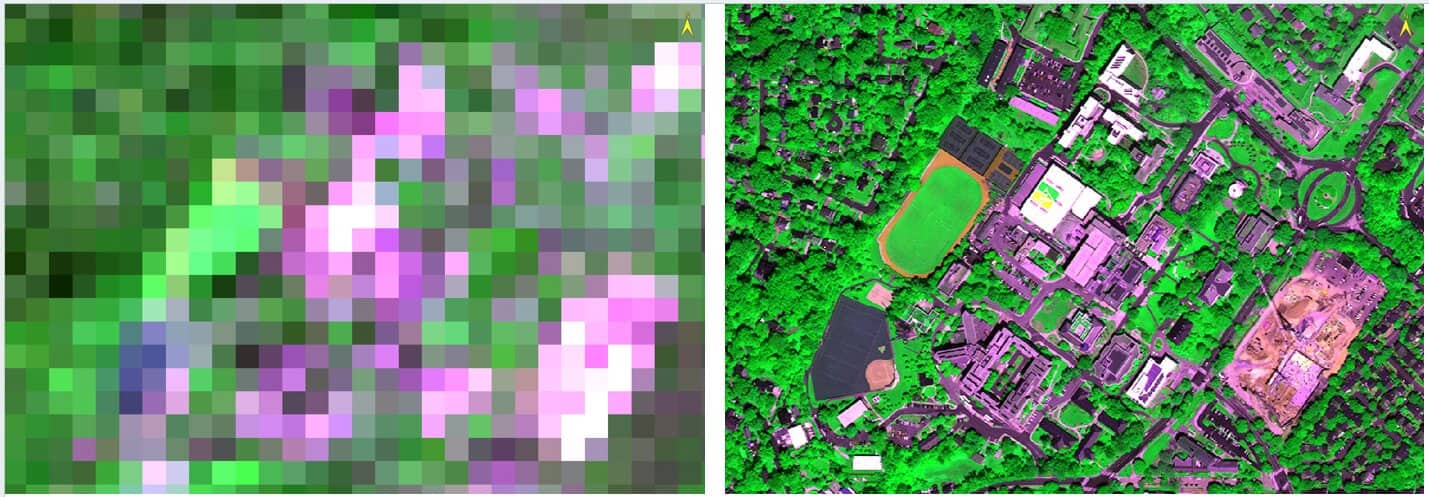
Advancements in high-resolution imaging, facilitated by CubeSats—shoebox-sized devices deployed in low-Earth orbit—are enhancing scientists’ ability to obtain accurate measurements about trees’ response to a warming climate.
Using CubeSats imagery, Michael Alonzo, a researcher at American University, and his team looked at the role of heat in the early onset of the urban forest growing season. They found that heat may not accelerate season vegetation leaf emergence as previously thought. This is because previous studies used satellite images with poorer quality. A green pixel may be evidence of a growing canopy but perhaps something else entirely.
The images from cubesats are detailed enough to pick out individual trees, which offers much richer insight into vegetation growth across the planet.
“If we want to learn whether a given species or plant is changing its life cycle events due to warming, we need to do a better job zooming in on individuals and how they interact,” Alonzo said in a statement.
Urban heat and satellite technology
The urban heat island effect happens when impervious surfaces such as concrete and asphalt trap and radiate heat, causing city temperatures to be two or three degrees Celsius higher than in non-urban areas. Studying this phenomenon gives scientists a preview of how climate change may affect overall vegetation in non-urban areas.
Using satellite technology, previous studies have shown trees in cities green up earlier and lose leaves later compared with those in rural and natural areas. It’s like the seasons are shifting — and scientists have largely attributed this to heat. However, Alonzo’s new study is calling this into question.
“Heat plays a role but we may be overstating its importance,” he said in a statement.
Cities are packed with a mix and varied vegetation, from trees to shrubs to turfgrass. Pixelated images, the ones used so far, don’t allow scientists to study the species individually or to track changes on a daily basis. But that’s no longer a limitation with CubeSats, allowing scientists to see how leaves develop day after day, for example.
Alonzo and his team used CubeSats imagery for growing seasons from 2018 and 2020, covering over 10,000 tree crowns on streets in Washington DC. The sample included 29 species of broadleaf, leaf-shedding trees. The researchers pieced together the satellite images and monitored the timing of green up and leaf loss in the fall for every tree.
They then analyzed how much the length of a tree’s growing season could be attributed to its species and how much to its location. They also factored in how other factors such as air temperature and impervious surface cover influenced these timing. While the findings are just for Washington DC, they can apply to other urban and non-urban areas, Alonzo said.
Up next, the researchers highlighted the importance of further studying how species composition changes between urban and rural areas. This would allow scientists to improve their models of how trees and other vegetation respond to heat. Alonzo is now planning to work with researchers in Nigeria and Haiti to apply CubeSats imagery to monitor changes in agriculture and forests.
The study was published in the journal Science of the Total Environment.






